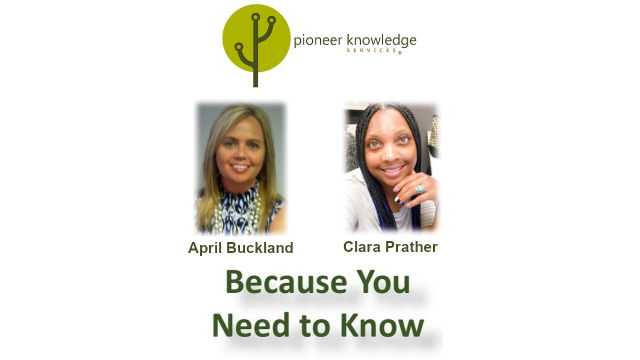
The recipient’s role – knowledge management lessons from rakugo [Arts & culture in KM part 12]
This article is part 12 of a series exploring arts and culture in knowledge management.
What’s the point, if there exists the best master, the best lesson content, but the apprentice is absent?
Rakugo – knowledge that crosses generations
The first time I came across rakugo (落語) while learning about Japanese culture, I was deeply intrigued by how the performer enthralls crowds, story after story, with no more than a folding fan, a cloth, and an immaculate skill in storytelling. What I didn’t realise then was that rakugo is an oral tradition, which means that the stories are passed down from masters to apprentices in spoken form, rather than written.
“But that’s nothing impressive,” you might say. “Even I can recount the fairytales told to me as a child at bedtime!” That would be fair, if all that mattered was the plot of the story.
However what makes rakugo special is that apprentices learn not only the plot (which is what the stories are about), but also about how to tell the stories. In traditional rakugo culture, apprentices earn the right to perform stories on stage through formal training sessions known as okeiko (お稽古), where their masters would first “perform” the story to them, and then critique their attempts to retell the story1.
In knowledge management (KM) terms, we would say that the apprentices are recipients of tacit knowledge through a process of socialisation.
The role of the recipient
Socialisation2 describes the creation of tacit knowledge in one person, through some shared experience with another (Nonaka, 1994). The okeiko presents such a shared experience for apprentices to have the opportunity to observe and replicate their masters’ art in detail.
Now imagine if there was an okeiko session: the master turns up half an hour early to rehearse for the session, the props are prepared, the lesson plan well-drafted. Then the appointed time arrives – but the apprentice is nowhere to be seen. Five minutes pass. Five turns to fifteen. And then fifty-five minutes later, the master receives a text. “I overslept,” wrote the apprentice. “Can we have the session on video call instead?”
Of course this is an exaggeration, and I would shudder to think that such a scenario would happen in formal rakugo culture! But it does highlight one thing: what’s the point, if there exists the best master, and the best lesson content, but the apprentice is absent?
So let’s make sure that the apprentice, or more broadly the recipient, is present. To this, I think there are lessons that we can learn from rakugo – the real thing, not the misadventure I described earlier.
1. One focus, one story
The objective may not always be to know more, but to know well.
A famous rakugo story goes like this: A couple wanted their child to live a long life, and so they went to the temple to seek the head priest’s advice. The head priest gave the couple several options for names which would bless their child with longevity. The couple, spoilt for choice, chose to name their child with ALL of the options (Endnote A), resulting in a name with over 90 syllables in it3.
One version of the story mentions that the child was drowning in a well, and it took too long to seek help as the villagers who were passing the news along spent too much time repeating the child’s name to each other. How ironic that a name that was intended to bless the child with a long life, should be the reason for this tragedy? The couple and the villagers lost sight of the objective. Their focus was on the supposed blessing of the name, rather than the actual life of the child.
Thankfully the rakugo apprentices learning this story from their masters during the okeiko are less short-sighted. To help them remain focused, there is a simple norm to follow during okeiko – “one okeiko, one story.”
Remember, the objective isn’t to know many stories, but to be able to perform on stage. As such, following a “one story” norm isn’t restrictive, but rather empowers apprentices to be able to perform that story sooner than if they tried to do multiple half-baked stories at a go.
Similarly, recipients should avoid the misconception that multi-tasking always equates to efficiency. The objective may not always be to know more, but to know well. Just as the idea of “one okeiko, one story”, focus on just one objective during the socialisation process as a start.
2. Be a beginner, but not an amateur
By being a beginner with a willingness to learn, it opens up avenues to maximise the effectiveness of existing skills.
The ranks of rakugo performers range from the lowest ranking zenza, to futatsume, then to the highest rank of shin’uchi who is a full-fledged professional and a master at the art. So naturally one might think that a shin’uchi would have also mastered all rakugo stories, wouldn’t they? In practice, this is not the case. There are records of shin’uchi taking turns to learn new stories from each other4 through okeiko.
Even as an accredited master, during the okeiko the recipient shin’uchi would take on the attitude of an apprentice. This is not to say that the recipient shin’uchi has instantly forgotten their years of experience in the art, but rather that they have remembered how to learn again. This is what it means to be a beginner but not an amateur, as the former refers to a mindset, and the latter refers to skill proficiency.
A parallel of this in a corporate context could be a HR director who has just joined a company in a different industry. Their skills and competencies still belong to them, such as knowledge of labour laws, and the ability to deal with complex HR problems. However it would be prudent for the HR director to have a beginner mindset especially as it is a different industry, so that they can understand the business context before applying their skills to achieve business objectives. By being a beginner with a willingness to learn, it opens up avenues to maximise the effectiveness of existing skills.
3. Class starts before school opens
In the workplace, there are many opportunities to build trust, yet just as many to lose it.
While I’ve mentioned okeiko extensively in the sections above, what I’ve yet to mention is that much of the work happens even before the formal okeiko sessions.
Informal learning may occur while the lowest ranking zenza are working in the theatre, and zenza would inadvertently hear multiple renditions of famous stories in the theatre they work in5 (Weingaertner, 2021). There are so many opportunities for zenza to pick up skills and knowledge just by working in the theatre, outside of formal okeiko. By the time the actual okeiko happens, the zenza would have already had a chance to understand the art on their own, before being further polished by their masters.
Similarly, there are various informal opportunities to gain tacit knowledge in the workplace, such as water cooler talks, or informal check-ins with supervisors. The onus is on the recipients to actively place themselves in such opportunities, and to keep their ears open while making sense of the environment.
Another key activity outside of the okeiko is building trust. Trust is gained by the zenza as they carry out tasks in the theatre, which include being the opening act to warm up the crowd, and menial labour such as setting the stage. By displaying conscientiousness and responsibility in carrying our their tasks, they are also laying a foundation for more experienced professionals to trust their character.
Increased trust is linked to an increased willingness to impart knowledge6, and therefore the importance of trust and rapport between the apprentice and master cannot be understated. Similarly, in the workplace, there are many opportunities to build trust, yet just as many to lose it. Class starts before school opens, and trust builds even before a formal meeting. It is what we do, and not just what we say, that makes the difference.
Conclusion
Ever so often, we are recipients. Be it in an academic environment, or when interacting with someone more experienced at work, there are so many opportunities for tacit knowledge to be created in us. However, an opportunity will only remain an opportunity, unless it is grasped and correctly acted upon.
I encourage us to apply these lessons from rakugo when we are recipients in socialisation processes, so that we can make the most of our learning.
Now, the stage is set, it’s time to perform.
Endnote A
The full name of the child in the titular story “Jugemu” is:
Jugemu Jugemu (寿限無 寿限無)
Gokō-no Surikire (五劫の擦り切れ)
Kaijarisuigyo-no (海砂利水魚の)
Suigyōmatsu Unraimatsu Fūraimatsu (水行末 雲来末 風来末)
Kuunerutokoro-ni Sumutokoro (食う寝る処に住む処)
Yaburakōji-no Burakōji (やぶら柑子のぶら柑子)
Paipopaipo Paipo-no Shūringan (パイポパイポ パイポのシューリンガン)
Shūringan-no Gūrindai (シューリンガンのグーリンダイ)
Gūrindai-no Ponpokopii-no Ponpokonā-no (グーリンダイのポンポコピーのポンポコナーの)
Chōkyūmei-no Chōsuke (長久命の長助)
Article source: Adapted from The Recipient’s Role – Knowledge Management Lessons from Rakugo, prepared as part of the requirements for completion of course KM6304 Knowledge Management Strategies and Policies in the Nanyang Technological University Singapore Master of Science in Knowledge Management (KM).
Header image source: © Lovell Lam, CC BY-NC-ND 4.0.
References:
- Brau, L. (2008). Rakugo: Performing comedy and cultural heritage in contemporary Tokyo. Lexington Books. ↩
- Nonaka, I. (1994). A dynamic theory of organizational knowledge creation. Organization Science, 5(1), 14-37. ↩
- Japan Arts Council. (n.d.). お寺噺『寿限無』|大衆芸能編・寄席|文化デジタルライブラリー. ↩
- Weingaertner, T. (2021). Whose Story Is It Anyway? Shunpūtei Shōta and the Individuality of the Performer in Contemporary Rakugo Storytelling. Japanese Studies, 41(2), 161–179. ↩
- Weingaertner, T. (2021). Whose Story Is It Anyway? Shunpūtei Shōta and the Individuality of the Performer in Contemporary Rakugo Storytelling. Japanese Studies, 41(2), 161–179. ↩
- Chung, Y., & Jackson, S. E. (2011). Co-worker trust and knowledge creation: A multilevel analysis. Journal of Trust Research, 1(1), 65–83. ↩







